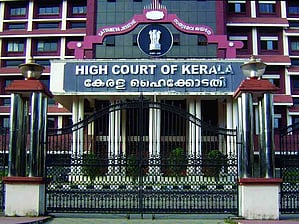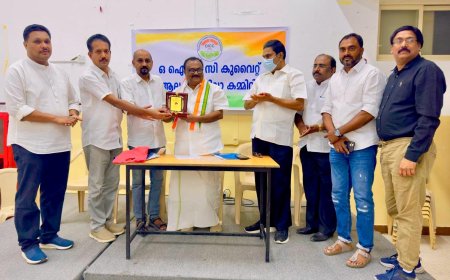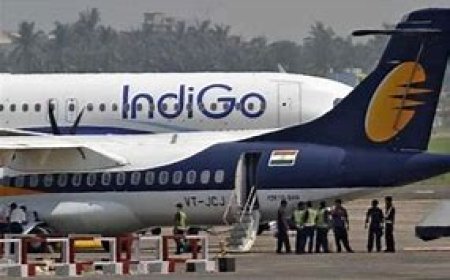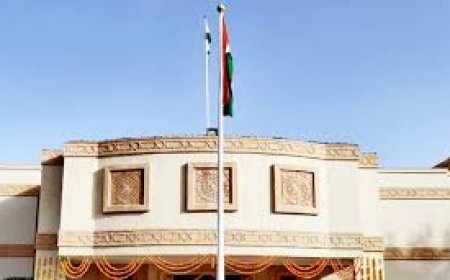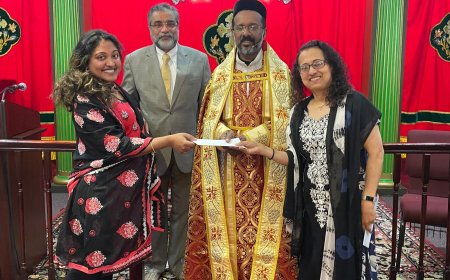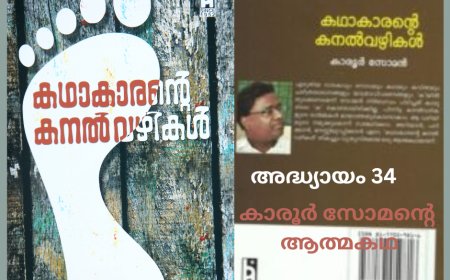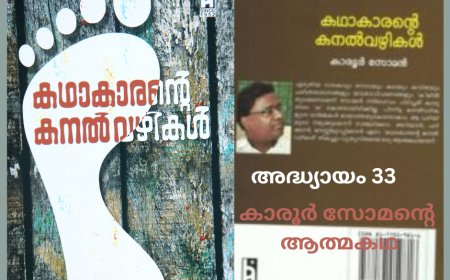Myanmar faces humanitarian crisis after devastating quakes; death toll hits 1700, many missing
The Friday's 7.7 magnitude earthquake, one of the strongest to hit Myanmar in a century, has damaged infrastructure including bridges, highways, airports and railways - hampering rescue efforts.

Click on Read More to view videos and photos ↓
THE Southeast Asian nation of Myanmar has suffered a devastating 7.7 magnitude earthquake.
The Friday's quake, one of the strongest to hit Myanmar in a century, has damaged infrastructure including bridges, highways, airports and railways - hampering rescue efforts.
Several families have lost members as toll continues to increase amid ongoing search and rescue operations. India has also joined locals to help victims by sending relief materials, rescue teams and medical equipment in five military aircraft.
What happened?
The initial 7.7 magnitude quake struck near the central Myanmar city of Mandalay early on Friday afternoon, followed by a 6.7 magnitude aftershock minutes later.
The tremors collapsed buildings, downed bridges and buckled roads, with mass destruction seen in the city of more than 1.7 million people.
At least 14 aftershocks have hit Myanmar since the 7.7-magnitude earthquake on Friday, an interactive map on the USGS website shows.
The majority of the tremors that happened over several hours following the major earthquake occurred shortly after midday local time - had a magnitude of between 3 and 5.
Death toll
The country is facing a humanitarian crisis following the quake that has killed more than 1,700 people in Myanmar and at least 17 in neighbouring Thailand.
But with unreliable communications, the true scale of the disaster remains unclear in the isolated military-ruled state, and the toll is expected to rise significantly.
The United States Geological Survey said the highest probability is that more than 10,000 people may have died and warned that estimated economic losses may exceed the Southeast Asian nation’s gross domestic product.
Search underway for survivors
The search for survivors has been primarily conducted by the local residents without the aid of heavy equipment, moving rubble by hand and with shovels in 41-degree Celsius (106 Fahrenheit) heat, with only the occasional tracked excavator to be seen.
A 5.1 magnitude aftershock Sunday afternoon prompted screams from those in the streets, and then the work continued.
A team sent from neighboring China rescued an older man who had been trapped for nearly 40 hours beneath the rubble of a Naypitaw hospital, and many others are believed to still be buried under, the official Xinhua news agency reported.
According to news agency AFP report, tea shop owner Win Lwin picked his way through the remains of a collapsed restaurant on a main road in his neighbourhood early on Sunday.
"About seven people died here" when the quake struck, he told AFP. "I'm looking for more bodies but I know there cannot be any survivors."
On Saturday, rescuers had pulled a woman out alive from the wreckage of a collapsed apartment building.
San Nwe Aye, sister of a 46-year-old missing monk, appeared in deep distress, and told AFP she has heard no news about his status.
Aftershocks in Mandalay
Two days after a massive earthquake, residents scrambled desperately through collapsed buildings on Sunday searching for survivors as aftershocks rattled the devastated city of Mandalay.
Many of Mandalay's 1.5 million people spent the night sleeping on the streets, either left homeless by the quake. On Sunday, a small aftershock struck, sending people scurrying out of a hotel for safety, following a similar tremor felt late Saturday evening.
Truckloads of firemen gathered at one of Mandalay's main fire stations to be dispatched to sites around the city.
Helps pour in
The UN Office for the Coordination of Humanitarian Affairs said that aid operations were being hindered by damaged roads and that hospitals in central and northwestern Myanmar were struggling to cope with the influx of people injured in the earthquake.
The UN humanitarian affairs office said it has mobilised with other groups and $5 million has been allocated from a Central Emergency Response Fund for “life-saving assistance”.
Rescue teams and aid have been arriving from donor countries around the world, with Thailand on Sunday dispatching 55 military personnel and six rescue dogs, along with equipment including cranes and diggers.
The Red Cross of Myanmar said volunteers were administering first aid and distributing items such as blankets, tarpaulins and hygiene kits.
Russia's Emergencies Ministry said it had flown in 120 rescuers and supplies to Yangon, Myanmar's second-largest city, and Russia's Health Ministry said Moscow had sent a medical team that includes specialists in infectious diseases, resuscitation, traumatology and psychology, as well as search and rescue teams with canine units and devices that can search in rubble with depths as much as 4.5 metres (14.7 feet).
On Sunday, a convoy of 17 Chinese cargo trucks carrying critical shelter and medical supplies was expected to reach Mandalay.
The European Commission said on Friday it would release 2.5 million euros (USD 2.7 million) in initial emergency assistance to assist with earthquake relief, bringing the European Union's total humanitarian aid for Myanmar to more than 35 million euros (USD 37.8 million) this year.
India stands by Myanmar
India has sent relief materials, rescue teams and medical equipment in five military aircraft to Myanmar to help victims of the earthquake.
Under its relief mission named 'Operation Brahma', India dispatched relief materials, medicines, an 80-member search and rescue team from the National Disaster Response Force (NDRF) and military field hospitals to Myanmar in three C-130J and two C-17 Globemaster aircraft.
A specialised rescue team comprising 118 personnel, from Indian Army's 50 (I) Para Brigade has also been swiftly deployed to Myanmar, officials said.
In a reflection of New Delhi's strong commitment to extend help, Prime Minister Narendra Modi spoke with Myanmar's Senior General Min Aung Hlaing on Saturday and conveyed that India stands in solidarity with the people of that country.
Monks trapped in rubble
At U Hla Thein monastery, more than 180 monks were taking the third session of a six-day exam for a senior level of monkhood when the tremors hit around 12:50 pm (0620 GMT) on Friday.
A picture shows them sitting on pink plastic chairs at individual desks in the cavernous hall, heads diligently bent over their papers as they worked.
On Friday and Saturday a total of 21 people were rescued alive, and 13 bodies had been recovered by Sunday morning, a co-ordinator said.
Novices, monks and relatives of the missing, many of them wearing surgical masks, peered through the hall as rescue workers used jackhammers to break up the pancaked mass of concrete.
Appeal for help
Myanmar's ruling Junta chief Min Aung Hlaing issued an exceptionally rare appeal for international aid on Friday, indicating the severity of the calamity.
The International Federation of Red Cross (IFRC) has launched an emergency appeal for 100 million CHF ($113.60 million) to assist 100,000 people with life-saving relief and early recovery support.
With temperatures rising and the monsoon season approaching within weeks, affected communities need stabilising urgently "before secondary crises emerge", it said.
"This is not just a disaster; it is a complex humanitarian crisis layered over existing vulnerabilities," said Alexander Matheou, the IFRC's Asia Pacific regional director.
Myanmar rebels call for ceasefire
Myanmar’s rebels declared a ceasefire in quake-hit areas to allow for aid to reach victims of the disaster as the death toll from the massive temblor rose to about 1,700.
The guerrilla People’s Defence Force will pause offensive military operations for two weeks except for defensive actions, effective Sunday, the shadow National Unity Government said in a statement.













